We had already decided to take an overnight in this town at the end of our overland adventure but we arrived so tired that we extended it to another night. The guide books are not euphoric about Uyuni so we were not hoping for much more than a comfortable bed.
Our hotel certainly lived up to its promise with attractive communal spaces, a reasonably well-appointed room (with a good bed) and constant hot water. The town actually surprised us with its wide roads (although they soon peter out into sandy and rutted tracks), a few interesting buildings and a pleasantly downbeat atmosphere. It is clearly used to getting an influx of travellers each afternoon, who mostly wait around for a night bus out of town. There are certainly a number of cafes on and around the main square that are keen to get their business. However, there are also lots of ordinary local people going about their normal business and paying little or no attention to all these gringos.
What was clear is that we really now seemed to be in archetypal Sudamerika. On our journey across, when we had seen local people, they were increasingly clearly of Andean origin and more (particularly women) were wearing traditional clothing. Outside our hotel was a local market in the street with rows of Bolivian women wearing their full skirts, aprons, woolly tights and several jumpers (they certainly wrap up well against the cold, even when it is warm) always with a hat, often the distinctive bowler hat perched on the top of their heads.
They were mostly selling grains and seeds, dried beans and some fruit and vegetables. These were just laid out on the brightly coloured cloths that they use for so many purposes. They use these as shawls or tablecloths, for wrapping up goods and tying the ends to make a carrying handle or tying packages (or the odd baby) into a knapsack on their backs.
At first we were surprised by the number of kids we saw with water pistols and then we saw some women selling bags of small balloons filled with water. The penny then dropped and we realised that carnaval will be at the weekend
and the kids are beginning the customary water fights that we had read about. Largely these allow teenagers to flirt with each other, the boys showing their machismo and the girls squealing and getting very wet! We had seen a public service advert earlier on TV about saving water which used the image of a balloon of water going back into the tap, so we guess this must be the pattern all over Bolivia (if not beyond).
The local museum describes itself as el primero museo de la cuidad, which can be translated as either the first or the best museum in town. Since it was actually the only museum we guess it might well be true either way. It has a grab-bag of exhibits about the local area including a number of 'mummies' recovered from high in the Andes (see our blog from Salta, Argentina for info about why these children were left there). Some other small museums that we have gone to have had signs to say that they no longer display these human remains, out of respect, but Uyuni has no such qualms.
It also had a number of old skulls showing how the indigenous peoples used to deliberately bind the skulls of high born children as they grew up so they would develop a pointed head. It’s only just occurred to us that the Andean love of pointed hats might well come from this! One interesting exhibit was a photo of the first geological exploration of the salt plains in the 1930s. It shows a truck looking remarkably similar to the old dumped truck that we saw yesterday in Colchani (see our last blog for a picture of it and make your own comparison!)
The only other ‘attraction’ in Uyuni is the train cemetary a little way out of town. We took a cab to visit this with Heather and Matt as even a short walk at these altitudes (and in the heat of the day) leaves you pretty exhausted. The site certainly lived up to Lonely Planet’s description of 'a huge rubbish strewn area'. The format was much more informal than we had imagined, instead of a bit of a museum we found a few lines of track full of half-dismantled locos, trucks and carriages.
Still, we had quite a good time clambering all over them and trying to identify some of the bits that lay all over the place. Had we been closer to home there were quite a few bits that would certainly have made an appearance as objets in our Ingle Row garden! It’s a shame though that the town has not made more of the resource. It stands at the end of the railway line and has a number of old locos and railway paraphanalia in the street outside the station.
You can’t help thinking that a bit of effort could turn all this stuff into enough interest to persuade some tourists who currently pass straight through the town to stay the extra day.
Some may find normal life here a little difficult though. The first morning in Uyuni we woke up to discover that there had been a power cut during the night and we were still without power. It was not too much of a problem to us, as it gets light early and during the course of the day the power was restored. However, at 6pm that evening there was another power cut, affecting the whole town.
A few places had generators and plenty more had candles or just operated in the dark. Rather than sit in our darkened room we went out for a candlelit meal, walked back under a really clear starlit night and then had an early night in our candlelit room. How romantic and we managed to not set fire to anything! The novelty started to wear off when we got up the next day and were still power-less. It’s obviously a regular occurance because the locals didn’t seemed surprised or phased by it. Nineteen hours after the power went off we left Uyuni and the town still had no power, but life was carrying on as normal.
Dead people, dead trains and dead electrics!
Wednesday, February 10, 2010
 Uyuni, Bolivia
Uyuni, Bolivia
Other Entries
-
65Encarnación - and we manage to see Jesús!
Dec 1854 days prior Encarnación, Paraguayphoto_camera55videocam 0comment 2
Encarnación, Paraguayphoto_camera55videocam 0comment 2 -
66Asunción; we're travellers, get us out of here!
Dec 2052 days prior Asuncion, Paraguayphoto_camera11videocam 0comment 2
Asuncion, Paraguayphoto_camera11videocam 0comment 2 -
67Xmas greetings!
Dec 2151 days prior Resistencia, Argentinaphoto_camera1videocam 0comment 7
Resistencia, Argentinaphoto_camera1videocam 0comment 7 -
68Resistencia: city of sculpture
Dec 2250 days prior Resistencia, Argentinaphoto_camera41videocam 0comment 0
Resistencia, Argentinaphoto_camera41videocam 0comment 0 -
69Our 'current' location
Dec 2349 days prior Corrientes, Argentinaphoto_camera24videocam 0comment 1
Corrientes, Argentinaphoto_camera24videocam 0comment 1 -
70Salta: our first sight of the Andes and our Xmas!
Dec 2547 days prior Salta, Argentinaphoto_camera35videocam 3comment 3
Salta, Argentinaphoto_camera35videocam 3comment 3 -
71Multicoloured mountains and angels with guns!
Dec 2745 days prior Humahuaca, Argentinaphoto_camera53videocam 0comment 1
Humahuaca, Argentinaphoto_camera53videocam 0comment 1 -
72Following the Train To The Clouds
Dec 2943 days prior San Antonio de los Cobres, Argentinaphoto_camera81videocam 0comment 0
San Antonio de los Cobres, Argentinaphoto_camera81videocam 0comment 0 -
73Cafayate; days of wine, icecream and waterways
Jan 0239 days prior Cafayate, Argentinaphoto_camera42videocam 0comment 3
Cafayate, Argentinaphoto_camera42videocam 0comment 3 -
74Tucumán; chilling out and getting heated!
Jan 0536 days prior San Miguel de Tucumán, Argentinaphoto_camera26videocam 0comment 1
San Miguel de Tucumán, Argentinaphoto_camera26videocam 0comment 1 -
75Like Birmingham but better!
Jan 1031 days prior Córdoba, Argentinaphoto_camera64videocam 0comment 2
Córdoba, Argentinaphoto_camera64videocam 0comment 2 -
76Wines, Bikes, Barnsley and Bernard O'Higgins
Jan 1625 days prior Mendoza, Argentinaphoto_camera45videocam 1comment 1
Mendoza, Argentinaphoto_camera45videocam 1comment 1 -
77Over the Andes to Santiago
Jan 2318 days prior Santiago, Chilephoto_camera95videocam 0comment 8
Santiago, Chilephoto_camera95videocam 0comment 8 -
78Carnival Time in Paradise Valley!
Jan 2714 days prior Valparaíso, Chilephoto_camera89videocam 0comment 6
Valparaíso, Chilephoto_camera89videocam 0comment 6 -
79City of churches, craft stalls and penguins!
Jan 3110 days prior La Serena, Chilephoto_camera55videocam 1comment 1
La Serena, Chilephoto_camera55videocam 1comment 1 -
80More Marys than you can shake a skull stick at.
Feb 064 days prior San Pedro de Atacama, Chilephoto_camera91videocam 3comment 1
San Pedro de Atacama, Chilephoto_camera91videocam 3comment 1 -
81Mountains, lakes, salt plains & altitude sickness
Feb 082 days prior Uyuni, Boliviaphoto_camera82videocam 1comment 5
Uyuni, Boliviaphoto_camera82videocam 1comment 5 -
82Dead people, dead trains and dead electrics!
Feb 10 Uyuni, Boliviaphoto_camera30videocam 0comment 3
Uyuni, Boliviaphoto_camera30videocam 0comment 3 -
83Let the festivities begin (but not in the convent)
Feb 133 days later Potosi, Boliviaphoto_camera78videocam 0comment 0
Potosi, Boliviaphoto_camera78videocam 0comment 0 -
84No sugar but lots of water and... dinosaurs!
Feb 199 days later Sucre, Boliviaphoto_camera61videocam 0comment 5
Sucre, Boliviaphoto_camera61videocam 0comment 5 -
85Possibly the highest capital city in the world...
Feb 2313 days later La Paz, Boliviaphoto_camera89videocam 1comment 4
La Paz, Boliviaphoto_camera89videocam 1comment 4 -
86Shining Lake Titicaca (when it isn't raining).
Feb 2616 days later Copacabana, Boliviaphoto_camera47videocam 1comment 2
Copacabana, Boliviaphoto_camera47videocam 1comment 2 -
87Despite the name, it's not always sunny here!
Feb 2818 days later Isla del Sol, Boliviaphoto_camera51videocam 0comment 0
Isla del Sol, Boliviaphoto_camera51videocam 0comment 0 -
88Incas, Pre-incas and a load of willies.
Mar 0523 days later Puno, Peruphoto_camera113videocam 0comment 0
Puno, Peruphoto_camera113videocam 0comment 0 -
89Road blocks, demos and a scenic journey to Cusco
Mar 0624 days later Cusco, Peruphoto_camera76videocam 0comment 5
Cusco, Peruphoto_camera76videocam 0comment 5 -
90Touring the Sacred Valley
Mar 0725 days later Ollantaytambo, Peruphoto_camera50videocam 0comment 8
Ollantaytambo, Peruphoto_camera50videocam 0comment 8 -
91Visiting the Inca sites around the city.
Mar 0927 days later Cusco, Peruphoto_camera46videocam 0comment 3
Cusco, Peruphoto_camera46videocam 0comment 3 -
92The White City
Mar 1634 days later Arequipa, Peruphoto_camera92videocam 0comment 2
Arequipa, Peruphoto_camera92videocam 0comment 2 -
93Strange markings at Dead Bull!
Mar 2341 days later Toro Muerto, Peruphoto_camera32videocam 0comment 0
Toro Muerto, Peruphoto_camera32videocam 0comment 0 -
94Colca Canyon 1: Snow and the Ice Maiden
Mar 2543 days later Chivay, Peruphoto_camera17videocam 0comment 2
Chivay, Peruphoto_camera17videocam 0comment 2 -
95Colca Canyon 2: Watch out, condors about!
Mar 2745 days later Cabanaconde, Peruphoto_camera56videocam 1comment 1
Cabanaconde, Peruphoto_camera56videocam 1comment 1 -
96Colca Canyon 3: Hot and Passionate
Mar 2846 days later Arequipa, Peruphoto_camera21videocam 0comment 0
Arequipa, Peruphoto_camera21videocam 0comment 0 -
97More lines and symbols but this time they're BIG!
Mar 3149 days later Nazca, Peruphoto_camera41videocam 0comment 2
Nazca, Peruphoto_camera41videocam 0comment 2 -
98Sun worshipping through the years
Apr 0453 days later Trujillo, Peruphoto_camera62videocam 0comment 2
Trujillo, Peruphoto_camera62videocam 0comment 2 -
99We go in search of GOLD!
Apr 0756 days later Chiclayo, Peruphoto_camera58videocam 0comment 4
Chiclayo, Peruphoto_camera58videocam 0comment 4 -
100Sun, surf and a very loud children's fairground
Apr 1160 days later Máncora, Peruphoto_camera22videocam 0comment 3
Máncora, Peruphoto_camera22videocam 0comment 3
Comments
2025-05-22
Comment code: Ask author if the code is blank

 Uyuni, Bolivia
Uyuni, Bolivia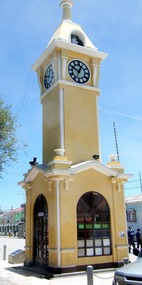
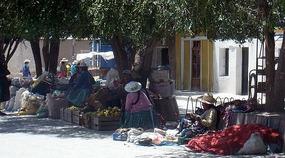
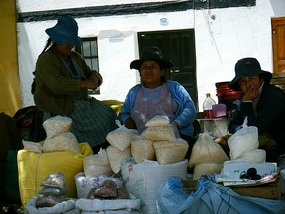
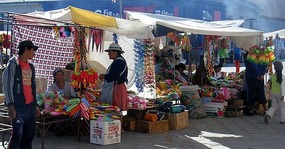
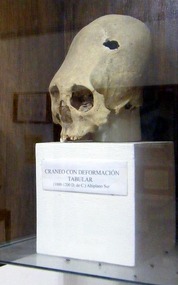
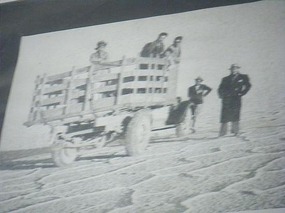
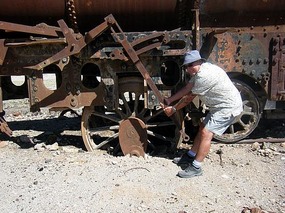
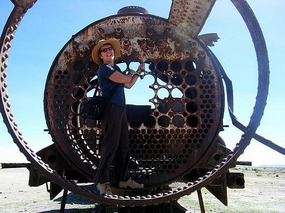
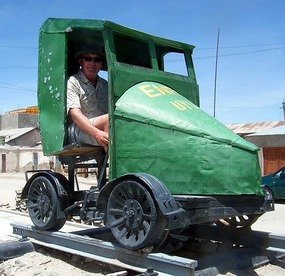
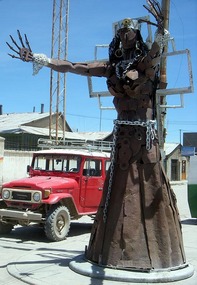





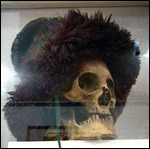
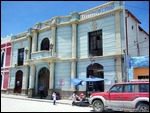
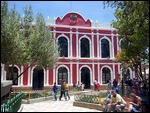
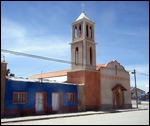
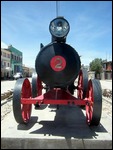

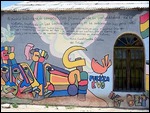

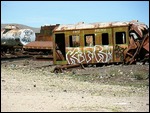
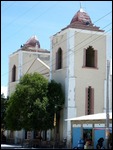
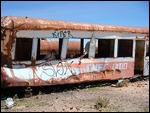
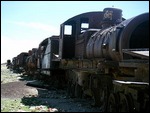

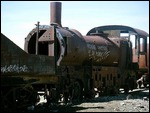
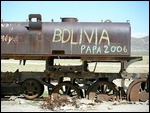
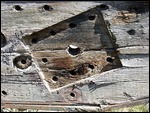
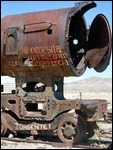
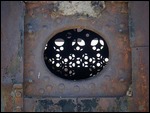
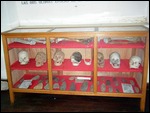
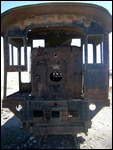
mx-5.snob
2010-02-15
Looks like a train spotters paradise...... or then again, perhaps a scrap metal merchant would do better financially out of this one horse town :)
jenandtony
2010-02-15
There's plenty of bits of old trains being used throughout the town for market stalls etc. Lots of the locos have had bits cut off them but there's still lots left there for an enterprising young lad like yourself to go into the scrap business!
grindrodkaz
2010-02-15
we were often surprised by the colourful traditional Bolivian women, we were accosted by a tourist bus of them at some lesser known inca ruins in Peru. They all insisted in having photos taken with us on some 1960's camera, no doubt pride of place on their mantelpieces! and we did not even charge then the customary peso for our services